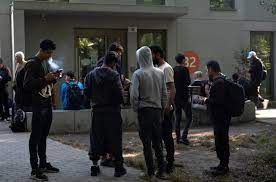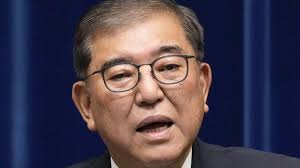
Three years after unveiling a plan for sweeping reform of the European Union’s outdated asylum rules, government ministers struggled on Thursday to overcome yet another obstacle to putting the new system in place, fueling doubt as to whether it will ever see the light of day.
The New Pact on Migration and Asylum was touted as the answer to the EU’s migration woes when it was made public in September 2020. The 27-nation bloc’s old rules collapsed in 2015 after well over 1 million people arrived in Europe without authorization. Most were fleeing war in Syria or Iraq.
But little progress was made on the pact as the member states bickered over which country should take charge of migrants when they arrive and whether other countries should be obligated to help.
That riddle was solved, at least temporarily, in June. The plan is held up now over a “crisis regulation” laying out extraordinary measures that could be taken in the event of a massive, unforeseen movement of migrants.
It would involve setting up processing centers on the EU’s outside borders where people would be screened when they arrive and include the option to detain people until their asylum claims are assessed.
“It’s not just the crisis regulation, it’s about the whole pact,” Spanish Interior Minister Fernando Grande-Marlaska warned his EU counterparts as he chaired their meeting in Brussels. The European Parliament must endorse the asylum plan, and lawmakers are blocking talks on parts of it until progress is made.
“There’s still a lot of technical and political work to be done” in talks with the lawmakers, said Grande-Marlaska, whose country holds the EU’s rotating presidency. “Negotiations on outstanding, sensitive issues are now on hold and this is of great concern to us.”’
Not only will there be new institutions. Hungary and Poland, which have nationalist and anti-migrant governments, will each take over the bloc’s presidency for six months, starting with Budapest in July, then Warsaw in January 2025. Presidencies help set the EU’s working priorities.
Hungary and Poland vetoed an EU summit statement in late June after they were outvoted on other parts of the pact. They show no sign that they will back down.
“We have to take a decision based on consensus,” Hungarian Deputy Interior Minister Bence Rétvári said. Hungary opposes the use of majority voting. “This is something we cannot accept, we have to have consensus on this issue for it to go ahead, and we don’t have a consensus here,” he told the ministers.
Human and migrant rights groups are dismayed at the EU’s focus on outsourcing its migrant concerns to countries that people leave or transit to get to Europe. Sometimes it uses coercive measures to get its way.
The latest example: the European Commission announced Thursday that it has tightened its visa rules for travelers from Ethiopia, because the country is failing to take back enough of its people who try to enter Europe without authorization.
The new crisis regulation also worries nongovernmental organizations.
“People who arrive at the EU’s borders must be able to seek asylum, have their claim examined fairly, and be received with dignity,” said Eve Geddie, director of Amnesty International’s EU office. “This agreement risks leaving people stranded, detained or destitute along Europe’s borders and will do nothing to improve the common response to asylum-seekers in Europe.”
For the International Rescue Committee, or IRC, it’s just part of a package of measures that could set EU policy on the wrong track for years to come, should the pact ever actually enter force.
“Rather than striking deals with non-EU countries designed to stop people reaching Europe without proper guaranties to respect human rights, the EU must establish truly independent bodies empowered to monitor and prevent human rights violations at borders,” IRC Senior Vice President Harlem Desir said.






